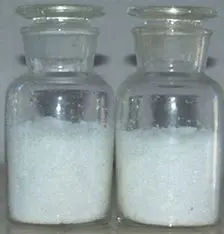IUPAC Name
2-chloroacetic acid
Cas Number
79-11-8
HS Code
2924.12.10
Formula
C2H3ClO2
Industry
Soap and Detergents
Appearance
Colorless to light-brown crystalline material
Common Names
Chloroacetic acid, Chloroethanoic acid, Monochloro
Packaging
25/50 kg Net HDPE Bags with Liner inside. 500/1050 kg PP FIBC Jumbo Bag
Brief Overview
Monochloroacetic acid (MCA) is a colorless crystalline material, which is highly soluble in water and soluble in organic solvents. Its vapor pressure at room temperature is moderate with reported values between 0.2 hectopascals (hPa) (crystalline substance) and 10 hPa (solution in water). MCA has a pungent odor. It is one of the most important halogenated derivatives of acetic acid. MCA is a reactive compound that can undergo various reactions to form a number of intermediates.
Manufacturing Process
The process for preparing monochloroacetic acid (MCA) comprising a chlorination step and a hydrogenation step. Its process comprises the removal of aldehydes from a process stream by oxidation using a peroxycarboxylic acid. A preferred peroxycarboxylic acid comprises peracetic acid. Preferably, the process is carried out at a temperature of 60–100° C., most preferably at atmospheric pressure. Preferably, an about equimolar amount of peroxycarboxylic acid is used relative to the molar amount of aldehydes present in the process stream. A practical choice for the process stream is the acetic acid recycle stream. The invention process provides a clear and colourless MCA end product.
Intermediate of carboxymethylcellulose and -starch can be used as thickening agent for detergents, oil drilling, paper, food and pharma applications, Production of agrochemicals like herbicides (e.g. 2,4-D and MCPA) or insecticides e.g. (dimethoates), Raw material for betaine production (personal care), Manufacturing of thioglycolic acid for UV-light stabilizers in PVC and thioglycolic acid ester as additives in cosmetics, Further applications: vitamins, synthetic caffeine, malonates, glycine.
